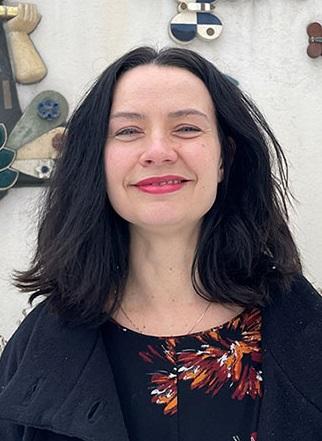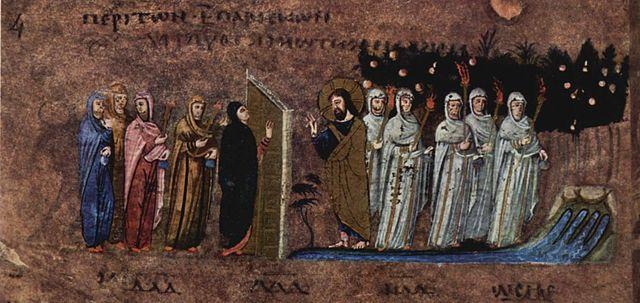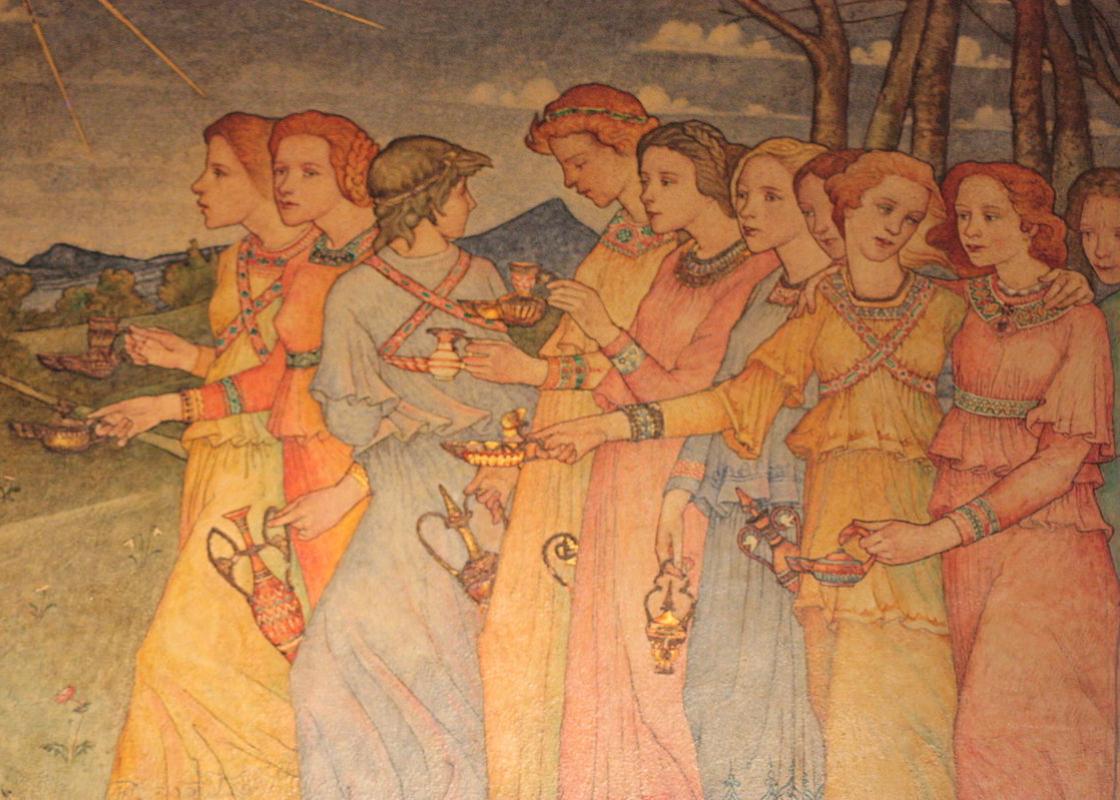Many have heard of the Good Samaritan.
“This is one of the most popular parables that is constantly repeated in the Church of Norway’s faith education, explains theologian and biblical scholar Ellen Aasland Reinertsen.
But what about the woman with the sourdough? Or the one who lost her silver coin? And who really knows what happened to the five foolish virgins?
The stories presented in today's Christian education do not appear out of nowhere, according to Reinertsen.
“I think it's interesting that some of the parables that had female main characters, and which were so important in antiquity and during the Reformation in the 1500s, have been forgotten in our time.”
This observation inspired her doctoral thesis, "Props in the Parable Plots," in which Reinertsen questions whether the women in the parables are primarily used as props.
"In more recent interpretations, they have either been ignored, considered less important, or interpreted in a very stereotypical way," she explains.
The Church Fathers, Luther and non-feminist scholars
While much of the New Testament is about Jesus, the parables are metaphorical stories that Jesus himself is believed to have told.
“The people and objects in the parables often have a symbolic meaning that allow for various interpretations,” says Reinertsen.
Moreover, many of the parables are simple, everyday stories that people during Jesus' time could relate to.
It’s particularly in recent research that female parable characters have been omitted!
Reinertsen refers to those who read, listen to, and interpret parables as "parable interpreters."
In her thesis, she focuses on historical interpretations during three different periods — theologians of antiquity, Martin Luther during the 16th century, and contemporary scholars.
Within the contemporary group, she distinguishes between feminist and non-feminist interpreters.
Where did the women go?
It began as a feminist project.
“At first, the project was called ‘lost in reception’. I thought that the female characters in the parables, of which there are fewer than male ones to start off with, had been overlooked in the overall reception of these stories.”

Reception history is a field of study concerned with how people have interpreted and utilized biblical texts over time. It provides valuable insight into why some stories are perpetuated while others are forgotten. In her analysis of the reception history, Reinertsen came to a surprising conclusion:
“It’s particularly in recent research that female parable characters have been omitted!”
"A prominent male parable researcher in the 1980s suggested that people in antiquity would have considered it scandalous for a woman to be the protagonist of a parable about the Kingdom of God."
Feminist research has focused far more on female parable characters and criticises other research for not doing the same, according to Reinertsen.
"However, feminist research has also neglected marginal female characters such as slave women."
She believes that the move towards a more scientific approach was one reason why women became less central in recent research. This approach allowed less room for interpretation, and female characters were marginalised.
"It was no longer acceptable to engage in the kind of allegorical and vague interpretations as before, such as interpreting a woman as a metaphor for God."
However, women were less overlooked in antiquity and during the Reformation in the 1500s.
"During this time, female characters became more important and were interpreted in a less negative and stereotypical way."
One woman at the top
In her previous fieldwork on Christian education in Norwegian churches, Reinertsen discovered that nearly all the parables were about men. Out of the top ten parables used by the churches, only one of the main characters was a woman.
This parable tells the story of a woman who possesses ten silver coins.
"She loses one of the coins and searches the entire house with a lamp and broom. When she finds the coin, she invites her female friends and neighbours to a party to celebrate."
Reinertsen argues that non-feminist research has often reduced the woman in this parable to a caricature.
"When the gender dimension is not overlooked in more recent interpretations, it is often stereotyped. For example, the woman in the parable with the silver coins is often portrayed as 'poor', or 'impure'," she adds.
Here, Reinertsen refers to the woman who baked bread with leaven.
“In interpretations right up to the 1990s, the woman with the leaven was considered ‘impure’ both because she was a woman, but also because of the leaven, which modern interpreters have considered a symbol of impurity.”
This is wrong, according to Reinertsen, who believes that these researchers lack an understanding of ancient food culture.
“Baking with leaven was the most common baking method at the time, when you had neither baking powder nor yeast as we know it.”
Many theologians of antiquity seem to have understood leaven as something important and good, and that the way it swells may be a metaphor for the growth of the kingdom of heaven.
“By extension, they see the baking woman as Christ, the incarnate divine wisdom that ‘bakes the gospel into the world’, for example.”
Uses history and imagination
Insight into different historical contexts has been crucial to Reinertsen’s own analysis. She is also inspired by more recent theories on gender, such as intersectionality, which make it possible to understand biblical texts in new ways:
“In my thesis, I propose what I call ‘possible interpreters’, where I use historically informed imagination to envisage how ordinary people who have not left behind any sources would interpret the parables.”
Reinertsen calls these imaginary interpreters mirror listeners.
She is particularly interested in the following question:
What would a person who identified with the more marginal females in the parable get out of the story?
Fem dumme og fem kloke jomfruer
To show that the social position of the listeners influences their interpretation, Reinertsen takes the Parable of the Ten Virgins, which was a very popular tale in ancient times, as one of her points of departure.
In antiquity and the early Middle Ages, the virgin was an ideal.
“One of the most important metaphors for being a Christian in the 1300–1500s was to be a pure virgin who would live her life in betrothal to Christ, and marry him after her death.”
In principle, everyone could live as chaste virgins, even married men and women who had all the children they wanted.
“The Parable of the Ten Virgins begins with the ten virgins waiting for a bridegroom,” explains Reinertsen.
The five “wise” virgins bring extra oil for their lamps, while the foolish ones do not.
Then the groom is delayed.
“All the virgins fall asleep. In the middle of the night, they hear a cry: ‘The bridegroom is on his way, go out and meet him’. The foolish virgins get stressed out because they don't have oil. They say to the wise virgins, ‘give us some of your oil’. However, the request is rejected, and the foolish virgins go to buy more oil. Meanwhile, the bridegroom arrives, and the wise virgins go to the wedding with him, and the door is shut.

How would young women of antiquity from different social backgrounds — what Reinertsen calls “intersectional virgins” — have interpreted this narrative?
In her thesis, she proposes three possibilities:
“In Jesus’ day, a virgin could be understood both as an unmarried girl, and perhaps also an ascetic who did not want to marry because she was waiting for the kingdom of heaven.”
“Some virgins were also slaves.”
The slave virgins, according to Reinertsen, would have related to the parable differently than the free unmarried women and ascetics.
Young girls together with a man behind a closed door — it’s hard to create good theology out of that these days.
At the same time, she believes that these perspectives have something in common:
“Varied listeners who could have identified with in the intersectional female characters would probably have given these characters more weight.”
Reinertsen adds that listeners may also have added more nuances to the stories than the more traditional interpretations.
Difficult but important stories
Although the Parable of the Ten Virgins was extremely popular in antiquity, it is no longer used in Christian education today.
“When I investigated this in previous field studies, only one church in Southern Norway still used it in its teaching.”
According to Reinertsen, one of the reasons why this parable is no longer included is that it has often been used to say that some people go to heaven while others are shut out.
“In the Church of Norway, this view no longer has that much support.”
Interpretations of this parable also have problematic sexual undertones:
“Young girls together with a man behind a closed door — it’s hard to create good theology out of that these days. In addition, its reception in older times has often been thought to mean that the wise virgins mysteriously marry Jesus — all of them.”

Reinertsen thinks it is a shame to stop using the politically incorrect parables. She points out that the Bible is full of difficult stories.
Including the parable characters that are problematic can give people today a greater opportunity to resonate with the stories.
“Or find characters that contrast with themselves,” Reinertsen adds.
Ultimately, it is the churches that decide which parables to use in church services and Christian education initiatives, according to Professor Anna Rebecca Solevåg from VID Specialized University, whose study areas include biblical studies of the New Testament.
There are very few Bible texts at all that focus on women.
Solevåg agrees that there are too few female parable characters in the Church of Norway’s Christian education and believes that there could be several reasons for this.
“It may be about a lack of awareness in the churches, that there is little reflection on the importance of representation and that people cling to the stories they’re used to.”
Structural problems in the Church of Norway
The Church's organizational structure is also responsible for the low representation of women, as per Solevåg, citing the Church of Norway's Plan for Christian Education, which was adopted by the Church Meeting in 2009.
The plan provides an overview of what the Church of Norway National Council considers the most important texts, which will form the core texts of the Christian education.
“The overview mentions three parables, all of which are about men. They have no important female figures,” says Solevåg.
“There are very few Bible texts at all that focus on women,” she adds.
The problem is not just in the Bible. If they had done a more thorough job, there are stories that could have been given more prominence.
“Feminist theologians have long tried to make these stories more visible, but it has been difficult to get the texts included in the Christian education curriculum and out into the church landscape.”
A longer version of this article was first published in Norwegian, and was since translated into English.



